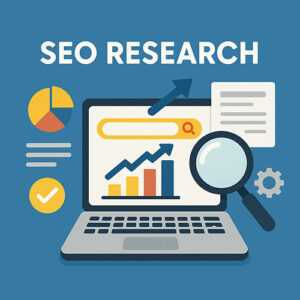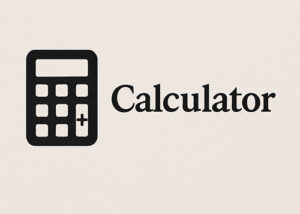Epidemiology and Infectious Diseases: How Disease Detectives Keep Us Safe
When a deadly disease suddenly appears, epidemiologists spring into action like detectives chasing clues. Epidemiology, often called the “science of public health detectives,” investigates how diseases spread, who is affected, and how to stop them. One of the earliest examples dates back to 1854 when Dr. John Snow traced a cholera outbreak in London to a contaminated water pump. Removing the pump handle quickly ended the epidemic. Today, epidemiologists continue this vital work, protecting communities from diseases like Ebola, COVID-19, and influenza.
What is Epidemiology?
Epidemiology focuses on groups of people rather than individual patients, looking at patterns, causes, and control measures for diseases. Infectious disease epidemiologists particularly study how pathogens (like viruses, bacteria, or parasites) spread through populations. They use the epidemiologic triad—agent, host, and environment—to understand diseases like malaria, where the agent (parasite), the host (humans), and the environment (mosquito habitats) interact.
In our globalized world, infectious diseases cause about 25% of deaths annually, highlighting the growing importance of epidemiology. Recent decades brought new challenges, from HIV/AIDS to COVID-19, showing how critical timely responses are to prevent widespread outbreaks.
How Do Diseases Spread?
Diseases spread via direct or indirect transmission:
Direct transmission: Pathogens spread through close contact or droplets (e.g., influenza or COVID-19).
Indirect transmission: Pathogens spread through air, contaminated objects (fomites), food, water, or vectors like mosquitoes (e.g., malaria).
Breaking any link in this chain stops infection. Measures include masks and distancing for airborne diseases, sanitation for food/waterborne diseases, and insect control for vector-borne diseases. Understanding transmission patterns helps epidemiologists quickly target and halt outbreaks.
Investigating and Stopping Outbreaks
When an outbreak occurs (unexpectedly high numbers of cases), epidemiologists follow systematic steps:
Confirm and diagnose cases: Verify the disease causing the outbreak.
Identify cases: Find all infected individuals.
Analyze data: Use epidemic curves (charts showing case timing) to pinpoint transmission sources.
Test hypotheses: Conduct studies comparing sick and healthy individuals to confirm the source.
Implement control measures: Quickly act (e.g., recall contaminated food, isolate sick individuals, vaccinate contacts).
Communicate findings: Inform the public clearly and continue surveillance to ensure the outbreak stops.
For example, in 1999 epidemiologists linked West Nile virus cases in New York to mosquitoes, prompting mosquito control efforts. Similarly, in 2012, contaminated steroid injections were quickly identified as the source of a meningitis outbreak, preventing further cases.
Surveillance: Early Warning Systems
Surveillance involves continuously monitoring disease occurrences to detect outbreaks early:
Passive surveillance: Healthcare providers routinely report cases.
Active surveillance: Health workers actively seek cases during high-risk periods.
Syndromic surveillance: Tracks symptoms (like cough or fever) rather than confirmed diagnoses to detect outbreaks quickly.
Effective surveillance helps spot diseases early, as it did when unusual pneumonia cases in Wuhan led to identifying COVID-19. Surveillance remains essential for preventing large-scale outbreaks.
Vaccination: Achieving Herd Immunity
Vaccines are powerful tools in public health, creating herd immunity—a state where enough people are immune, preventing disease spread. Herd immunity thresholds vary (e.g., measles requires ~95% immunity due to high contagiousness).
Vaccination strategies include:
Routine childhood immunizations: Prevent diseases like measles and polio.
Mass vaccination campaigns: Quickly immunize populations during outbreaks.
Ring vaccination: Vaccinate contacts of infected individuals, used successfully for Ebola.
Vaccination eradicated smallpox, nearly eliminated polio, and significantly reduced deaths from measles and COVID-19.
The Critical Role of Epidemiologists
Epidemiologists wear many hats:
Surveillance experts: Continuously monitor disease trends.
Field investigators: Directly respond to outbreaks, tracing contacts and gathering data.
Data analysts: Use statistics and models to predict and control disease spread.
Laboratory liaisons: Coordinate closely with labs to confirm diagnoses.
Policy advisors: Guide public health responses and communicate risks effectively to the public.
Their diverse skills ensure rapid responses to outbreaks, guiding critical public health actions.
Lessons from Historical Epidemics
Major outbreaks shaped epidemiology:
1918 Influenza Pandemic: Highlighted the effectiveness of social distancing and early interventions.
2014–2016 Ebola Epidemic: Emphasized rapid response, community engagement, and innovative vaccine strategies.
COVID-19 Pandemic: Demonstrated challenges like asymptomatic transmission, underscored global interconnectedness, and rapidly advanced vaccine technology.
These events taught valuable lessons about preparedness, rapid response, and international cooperation, informing future strategies.
Facing Future Threats
Emerging diseases like avian flu, Nipah virus, and antimicrobial resistance continue to pose threats. Global surveillance, preparedness, and collaboration remain essential. COVID-19 showed that investing in public health infrastructure saves lives. Continuous improvement in surveillance, vaccine technology, and global coordination will equip us better for future challenges.
Conclusion
Epidemiology plays a crucial role in protecting public health. By identifying disease sources, implementing timely interventions, and educating communities, epidemiologists help prevent outbreaks from becoming epidemics. Understanding their work empowers communities to support and participate in public health measures. As diseases inevitably emerge, effective epidemiology ensures they do not spread unchecked, safeguarding our health for generations to come.









